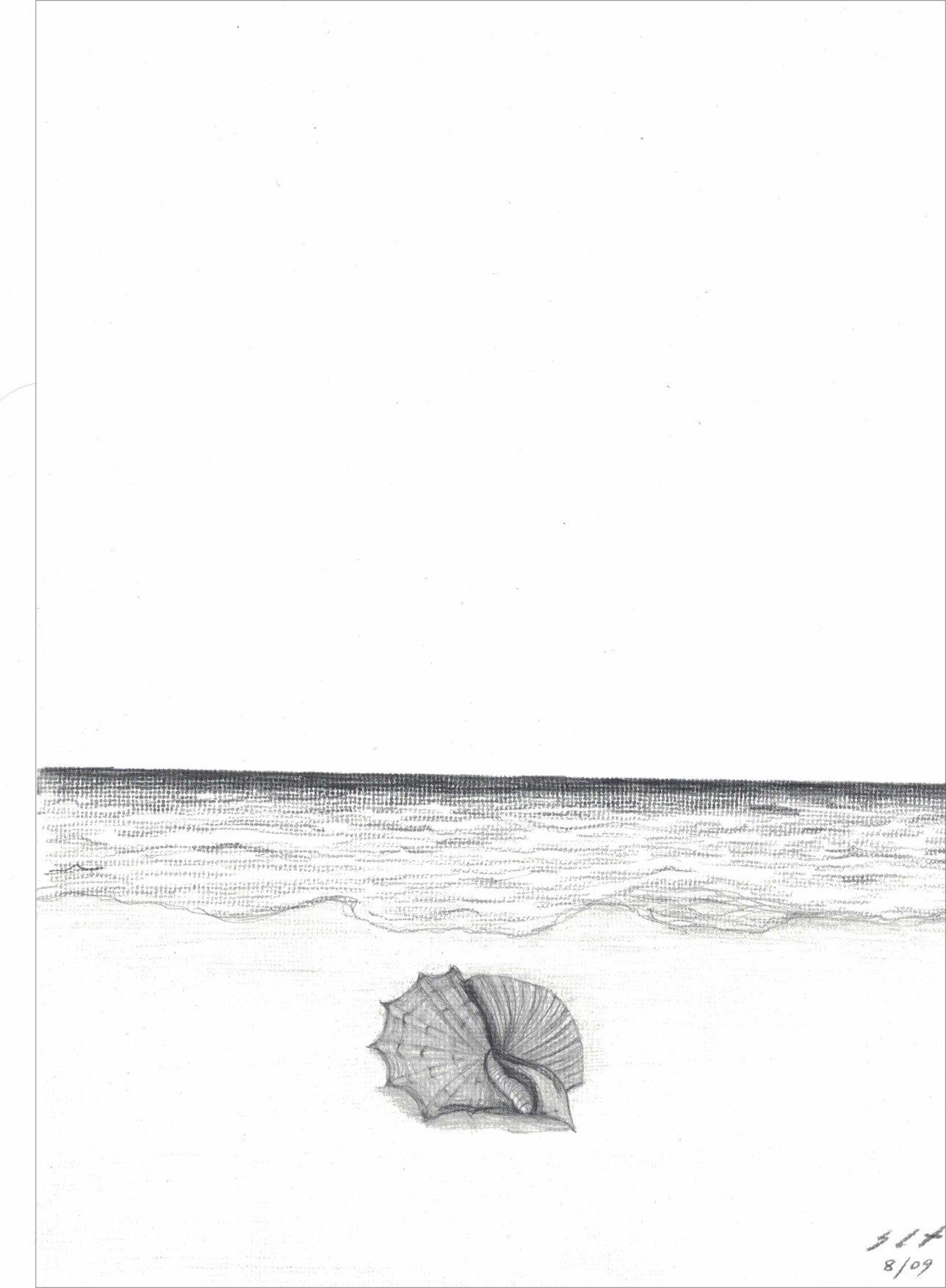The representations and the thing itself
With relief, humiliation, and terror, he understood that he
also was an appearance, that other was dreaming about.
Jorge Luis Borges
In the beach sidewalk, the old man stopped before the small seashell. After some time of reflection and daydream, the old man could both be enchanted by the nacre paradox, creation of the gelatinous mollusk, or have remembered an image from the past – the boy placed the seashell by his ear and was marveled by the sea sound. Inspired, the old man wrote some lines dreaming about translating the thing itself as a symbol – or the supposed thing itself, as we will see later on. When published, new lights shed on the work: the mixed critics did not trouble the old man: one commented on the title – selfishness' masterpiece; another overreacted about the difficulty of placing it in the complexity of history. The reader either loved it or forgot about it and the poet gave an interview to the remote state TV program. After he was gone forever, the verses about the seashell’s soul continued to be spread through another man who, in the impersonal generosity of a library, stopped before the beauty of Poetry.
The image, the word, the face and the gesture, perception and self-perception, everything that man inserts is representation. It may sound uncomfortable, but consciousness – understood as self-perception, depends on the soma, that is, a filter that translates substances and stimuli, whose result is nothing but representation. In our inner twilight, there is nothing like the sentence as it will be written in the sheet of paper, or the image as the one that will be defined in the painting, or the gesture, with its impression of stability and solidity, on the stage of the Theatre of the Absurd. From our inner chaos, we translate – with method, constancy, sweat, in short – with love, a spectral, unstable intention, in language. How distant is the iridescent calcium from the words or images that can describe it. Knowledge does not get us together, as we would hope for, but pull us apart from the thing itself, as well as from ourselves and one another, in successive and infinite representations.
Angel Damiel captures, if that is the word, the spectrum of a pencil at Berlin’s library. Waiving eternity, in exchange of the sensory experience, Damiel licks his blood wet fingers and enjoys color and flavor. The angel’s greatest achievement, in conversion, is the exchange of spectral perception for human perception, and not the achievement of the thing itself. For us, the real, the reality, the universe, as you wish, is a prismatic book of incomparable style whose origin is unknown, and whose reading is a permanent process. It is an illusion to consider the flashing inner flow, for being immeasurable, superior to interpretation, measurable by excellence, if our inner world only gains meaning if exteriorized. Pain shrinks in the presence of morphine and the sunny, adored me fades under the insidious and effective attack of insanity. The bones survive man’s vanity and the verb survives both. The representation is our maximum power. Immersed in the real’s ocean we are its ephemeral, only interpreters, so far. And we question ourselves, how would the old man have done lost in the seashell’s infinity: why would this immeasurable, timeless, absolutely elusive Being need a succession of exotic scribes?
About the authors:

Edite Galote Carranza
M.A. from the Mackenzie Presbyterian Institute in 2004; Ph.D. from the University of São Paulo’s School of Architecture and Urbanism in 2013 with the thesis “Alternative Architecture: 1956-1979”; director of the architecture office and publishing G&C Arquitectônica and of the electronic journal 5% Arquitetura + Arte ISSN 1808-1142. Publications in journals, books Representation Scales in Architecture, Constructive Details of Architecture and The small invisible room: brushing the history of the São Paulo architecture. Professor in undergraduation and graduation courses at the São Judas Tadeu University.

Ricardo Carranza
PUBLICATIONS in Anthologies of National Contests – SCORTECCI, SESC DF, literature magazine CULT, and Poetry and Literature websites Zunái, Stéphanos, Germina, Cult – Literary Workshop, Mallarmargens. Published Poetry BOOKS: Sextet, Author’s Edition, São Paulo, 2010; The Empirical Flower, Author’s edition, São Paulo, 2011; Dramas, Publishing G&C Arquitectônica Ltda., São Paulo, 2012. Unpublished Tales BOOKS: The comedy of errors, 2011/2018 – pre-selected in the Literature Sesc Prize 2018; Anachronisms, 2015/2018. Insomnia Notebooks (58): since 2009. ARTICLES published in 5% Arquitetura + Arte magazine since 2005.
How to cite:
CARRANZA, Ricardo; CARRANZA, Edite Galote. The representations and the thing itself. 5% Arquitetura + Arte, São Paulo, year 14, v. 01, n.18, e123, p. 1-5, Jul./Dec./2019. Available at: http://revista5.arquitetonica.com/index.php/magazine-1/literatura/a-representacao-e-a-coisa-em-si
English translation by:
Caroline Parente Cardelino
M.A. Nívia Maria Rodrigues Fernandes Marcello
Acessos: 844
